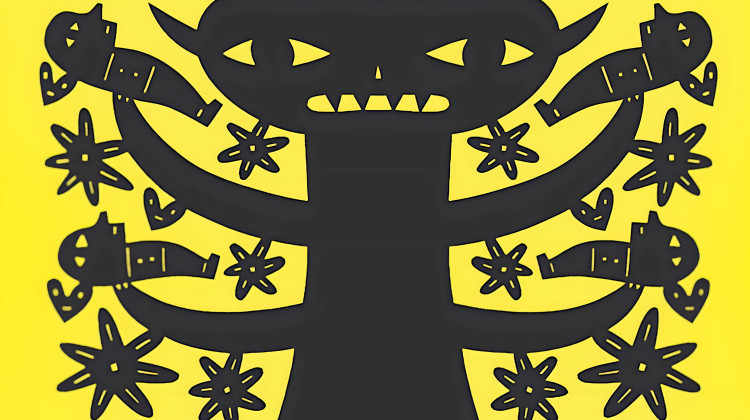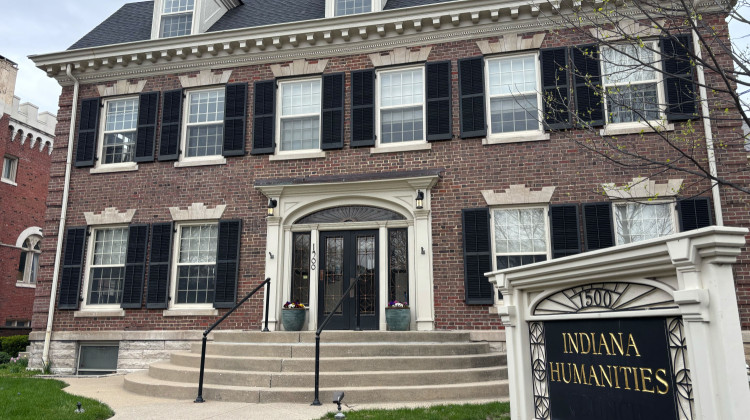For decades, the streets of Naples have been menaced by the Camorra mafia — stroll the streets of Sanità, an inner-city neighborhood, and you'll overhear pop songs like O Panar e Drog, featuring a singer boasting about buying and using "a breadbasket full" of drugs off Sanità's streets.
But underneath those cobblestones lies a gem of early Christian art: The Catacombs of San Gennaro. Now, a local priest is trying to bring the mafia and the art together.
When Don Antonio Loffredo arrived here about a decade ago, he found three levels of frescoes, chapels and cubicles beneath the neighborhood's trash-strewn streets. It's a burial ground that dates to the 2nd century, the largest of its kind in southern Italy. But back then, tourists only wound up in this part of town by mistake.
Loffredo saw an opportunity. "We took kids with one foot in the streets and one foot in the church, so to speak," he says. Some of them even came from mafia families. "I can say this because your audience is far away," he adds. "It could easily be the case that the sons of a boss are here, and one of them has nothing to do with the mafia".
Loffredo says crime families often feel trapped by a life they were born into, and are eager to find alternatives for their kids. So he put them to work fixing up the seriously neglected catacombs. Mud and dirt covered much of the floor; an old lighting system left much of the artwork in shadows; and a store room had been stuffed with waste and old equipment from a nearby hospital. All of it had to go.
"When we started they were 16-year-olds. Now they're in their 20s, and they're paid because they are entrepreneurs. It's not hard to offer alternatives to crime if you're creative and available," he says. And after fixing up the Catacombs, they went to work in management, the ticket office, and as guides.
In the restored Catacombs, mosaics of jaw-dropping beauty glisten under high-tech lighting, paid for through donations and grants from such corporations as IBM and Vodafone, as well as local foundations. Tombs that once housed the remains of Christian saints and martyrs are carved right into hardened volcanic ash, and look like the inside of a surrealist beehive.
The effect is breathtaking, and ticket sales have increased to the point that the Catacombs help employ roughly 40 people, mostly young. That's 40 jobs in one of the poorest neighborhoods in one of the poorest regions of Italy, where youth unemployment is well over 50%.
Like many, tour guide Vincenzo Porzio initially fled Naples in search of work. "I was working in London for one year," he says. "And when this opportunity was open, I rushed here to Naples, just because if you have to use your personal energy, I think it's better you use it for your hometown than for foreign town."
The transformation surrounding the catacombs is remarkable, says Vincenzo Galgano, a former chief prosecutor of Naples. Especially considering the neighborhood's rough reputation. "It was heroin! Heroin has destroyed the poor. Like syphilis in the 1500s. Like the plague. I think Don Antonio has come up with a cure for the social illnesses that afflict the Sanità neighborhood," he says.
The prosecutor was so impressed by the turnaround, he told his staff to nix the gold watch for his retirement a few years ago, and put the money instead towards restoring a San Gennaro fresco. Today, the catacombs have their own restoration studio.
Before the the full-scale makeover, roughly 5,000 visitors came per year. Now it's up to 40,000. Tour guide Porzio says that's had a huge impact on the neighborhood. "Okay, they pay the ticket for the Catacombs, but then they go and get a coffee," he says. "They go and get a pizza. And yesterday I went into a small shop that sells ham and cheese and they said 'Oh Enzo, Can we invent something with the tourists?' So you see how the mentality is changing. They are going out from the ghetto, with the mind. Because they are having a new guest. So just having a new guest is changing the district ... and even the way to do business."
Or, as priest Don Loffredo says about the mafia: don't fight it, cure it, by offering something beautiful in its place.
9(MDEwMDc1MzM3MDEzNDczOTA0MDc1MzViMQ001))
 DONATE
DONATE









 View More Articles
View More Articles


 Support WFYI. We can't do it without you.
Support WFYI. We can't do it without you.